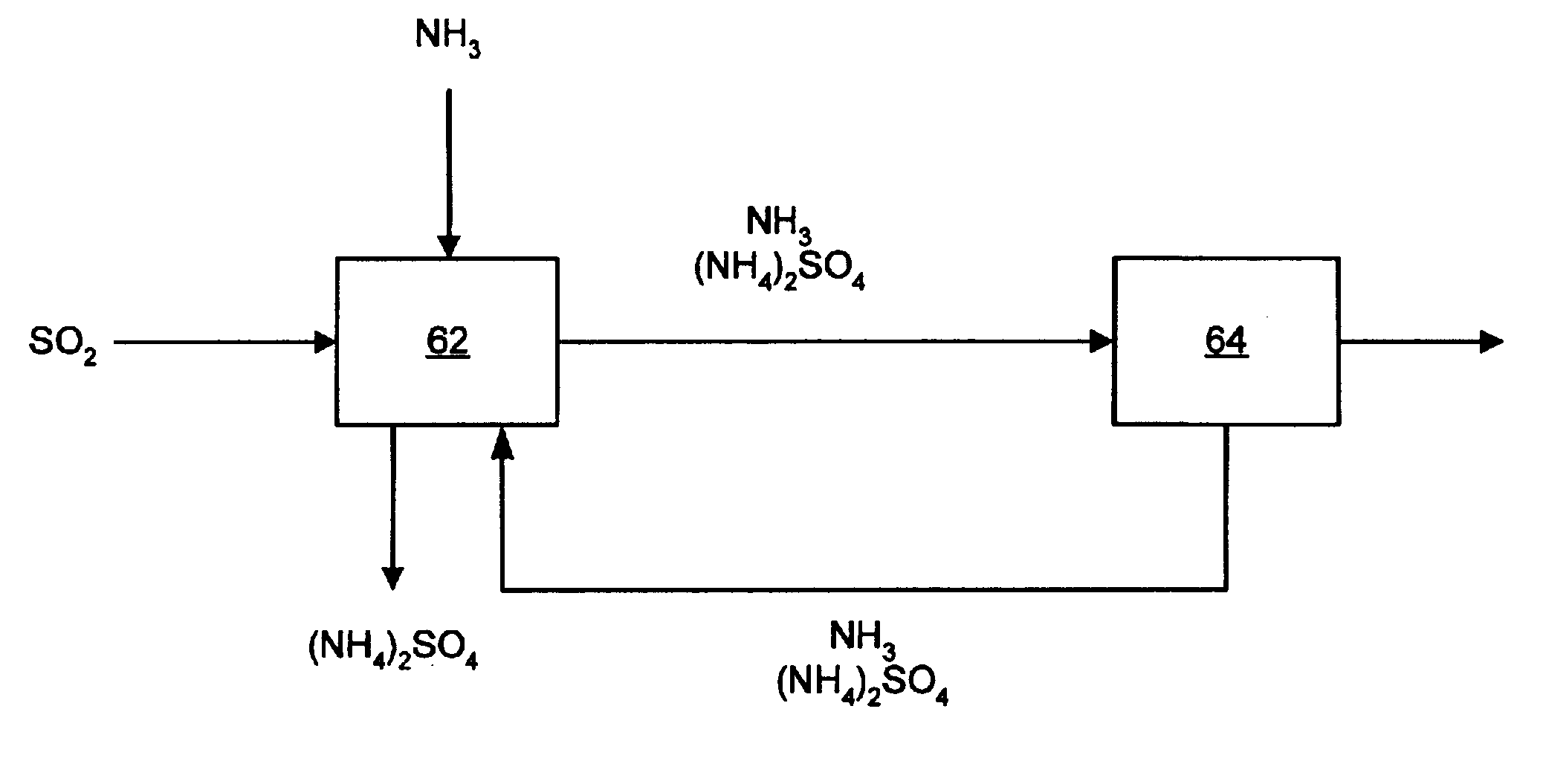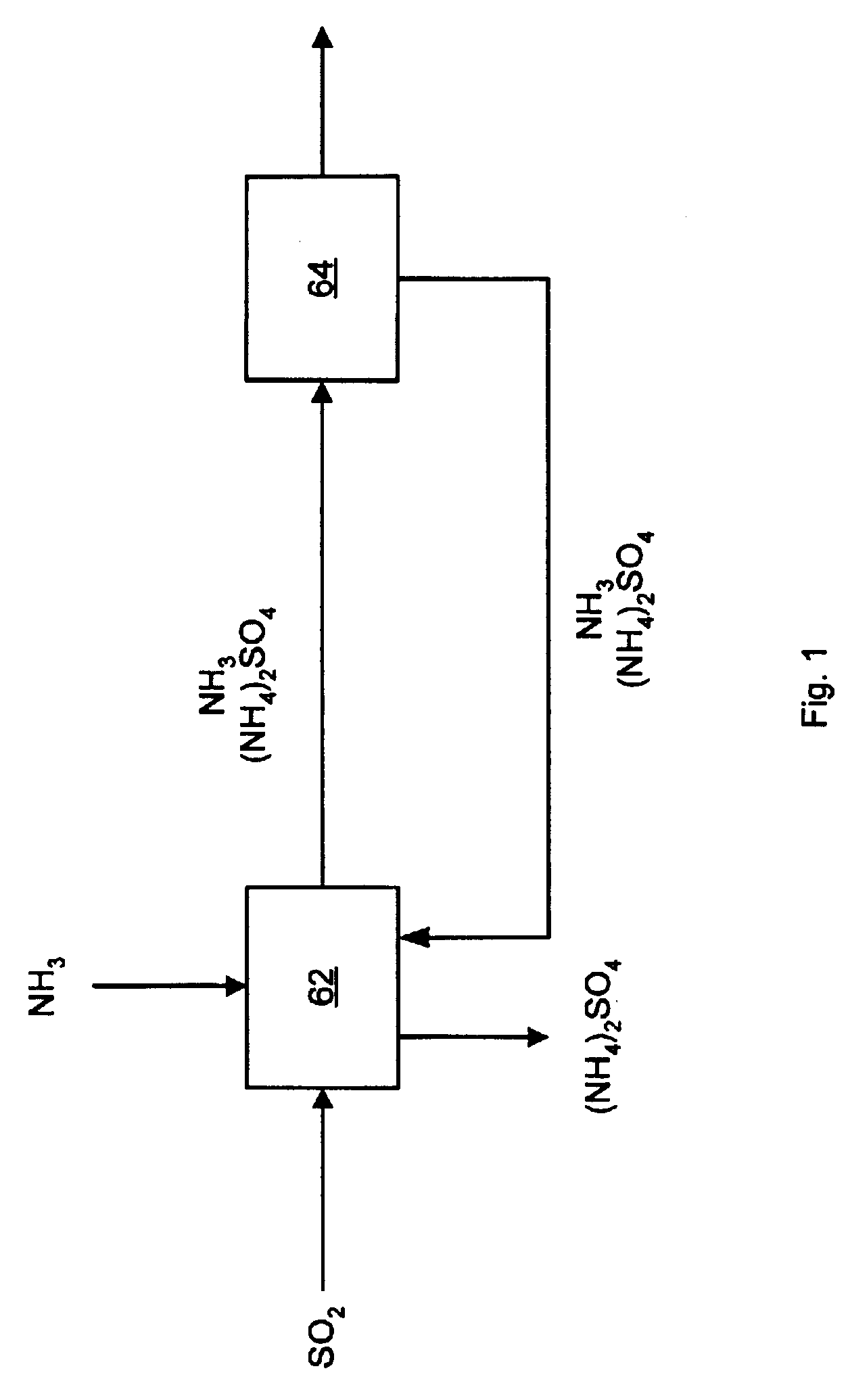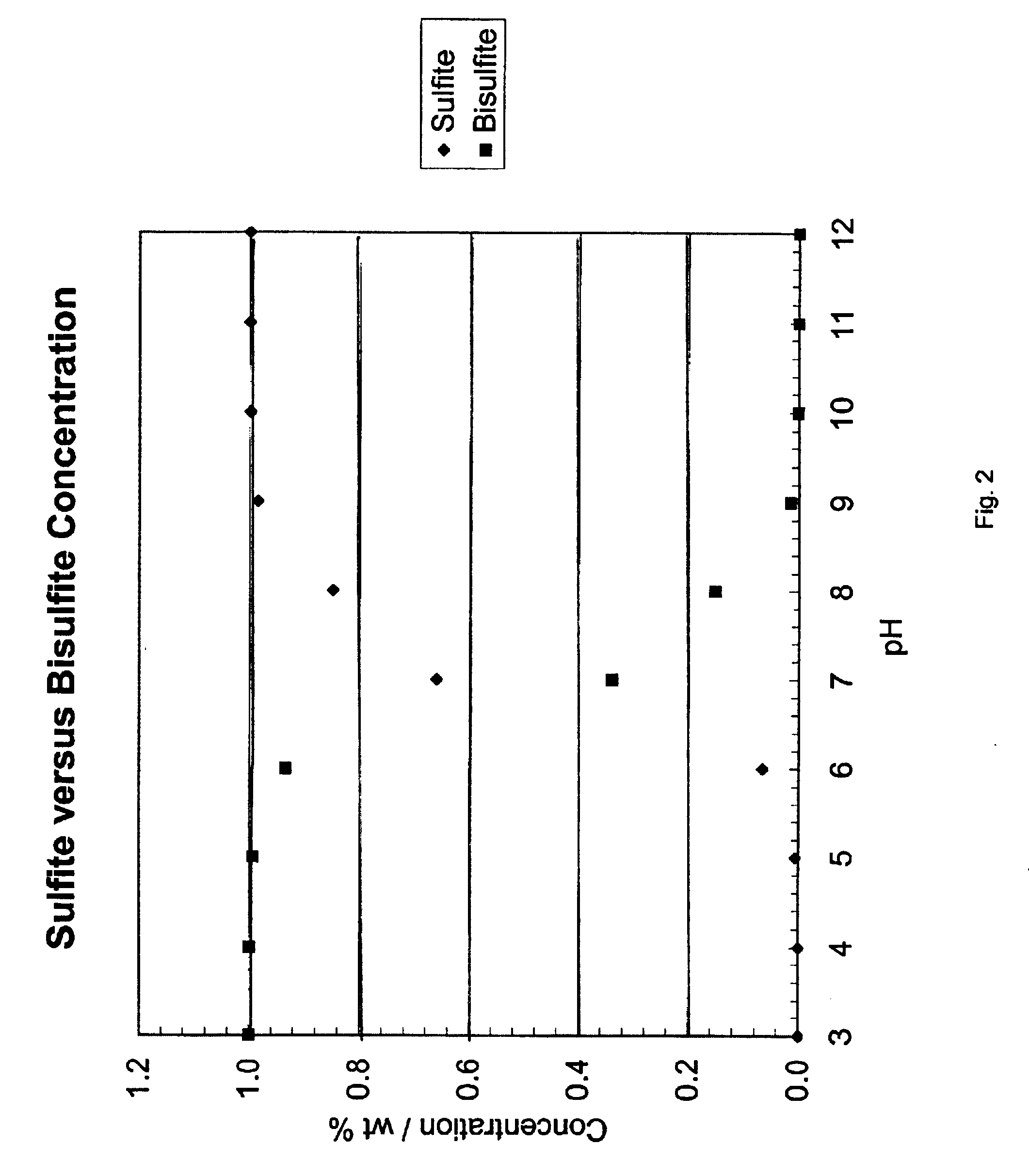Sulfur dioxide removal using ammonia
a technology of sulfur dioxide and ammonia, which is applied in the direction of sulfur compounds, dispersed particle separation, separation processes, etc., can solve the problems of secondary pollution, serious negative health effects on people, animals and plants, acid rain, etc., and achieve the effect of reducing the liquid-to-gas ratio, preventing ammonia slippage, and reducing operating costs
- Summary
- Abstract
- Description
- Claims
- Application Information
AI Technical Summary
Benefits of technology
Problems solved by technology
Method used
Image
Examples
Embodiment Construction
An experiment was performed to demonstrate the scrubbing step of the present invention. A 3.8 cm (1.5 inch) diameter column packed with 46 cm (18 inches) of 5 mm RASCHIG rings was used to test the SO.sub.2 scrubbing rate in a ten percent ammonium sulfate solution as a function of pH. The ammonium sulfate solution was initially pH adjusted with 96 wt. % H.sub.2 SO.sub.4 for pH5. The following conditions were used for all of the testing: gas flow rate=17.5 L / min., liquid flow rate of 38 mL / min., SO.sub.2 concentration=1350-1390 ppmv, NO concentration=250 ppmv, O.sub.2 concentration=6 wt. %, and liquid temperature=52.degree. C. (125.degree. F.). The testing was done in a once-through mode, and the pH of the solution was determined on the inlet and outlet of the column.
FIG. 4 is a chart showing the results of this example experiment. In FIG. 4, it is clear that the scrubbing rate of SO.sub.2 increases with increasing pH, as shown by comparing outlet to inlet SO.sub.2 concentrations. The...
PUM
| Property | Measurement | Unit |
|---|---|---|
| temperature | aaaaa | aaaaa |
| temperature | aaaaa | aaaaa |
| diameter | aaaaa | aaaaa |
Abstract
Description
Claims
Application Information
 Login to View More
Login to View More - R&D
- Intellectual Property
- Life Sciences
- Materials
- Tech Scout
- Unparalleled Data Quality
- Higher Quality Content
- 60% Fewer Hallucinations
Browse by: Latest US Patents, China's latest patents, Technical Efficacy Thesaurus, Application Domain, Technology Topic, Popular Technical Reports.
© 2025 PatSnap. All rights reserved.Legal|Privacy policy|Modern Slavery Act Transparency Statement|Sitemap|About US| Contact US: help@patsnap.com



